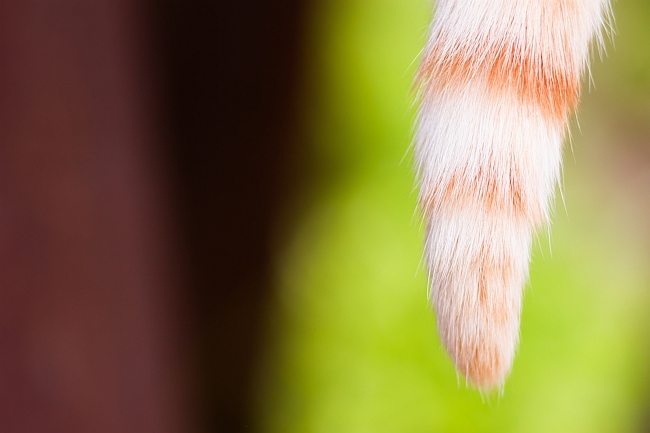
Felines are known for their agility and stealthy hunting skills. Their long tails flicker and flit like the tongue of a flame, effortlessly behind them as they go. However, from time to time a tail injury will occur on even the most adept of kitties. Find out what kinds of things cause tail injuries, and what the tell-tale signs of a damaged tail might be.
What Causes Tail Injuries
- Getting caught in a door: Sometimes when a person shuts a door behind them, they may not be aware that their cat is underfoot, and that their tail may not make it in the process. A door slamming on a tail can cause breaks, strains, bruises and swelling to the tail. (If you are around when a cat’s tail gets hurt, they will let you know about it. So if you are worried you are to blame for the bumpy knob in your kitties’ tail, just remember if you didn’t witness your cat screeching for his life, then it probably occurred when you weren’t around.)
- Being stepped on. Because cats move so silently, it can be easily for them to be treaded upon, or accidentally stepped on before someone realizes they are there. This happens most frequently with cats they are always on the prowl for creative new places to nap.
- Having their tail pulled. Children especially are often found to be the culprits who pull a cat’s tail. Kids are fascinated by animal movements and their soft fur, so be sure to watch children when they are around cats, so that they don’t’ do anything that might incite a cat to scratch them.
- Automobile accidents. When a feline attempts to streak across the road while there is oncoming traffic, more often than not, they will make it safely without a glitch. But if they barely escape, it is usually the tip of the tail that pays the price.
- Getting bitten by other animals. One of the primary reasons people aim to keep cats indoors is to help them avoid the trauma of cat fights with feral felines or territorial neighboring cats. This is another way kitty tails can get injured.
Symptoms of Injured Tails
- A kink or separated “break” in the hard part of the tail.
- Evidence of pain whenever the tail is touched, or evidence of numbness in the tail.
- A noticeably hot tail, or a cat feeling feverish.
- Swelling, or broken skin, and lost fur.
- A change in tail posture unable to move fluidly, or part of it hanging down limply, without the original range of motion.
- Imbalance in a pet’s gait, in walking or running.
- Limb paralysis, lack of mobility
Urinary incontinence.

